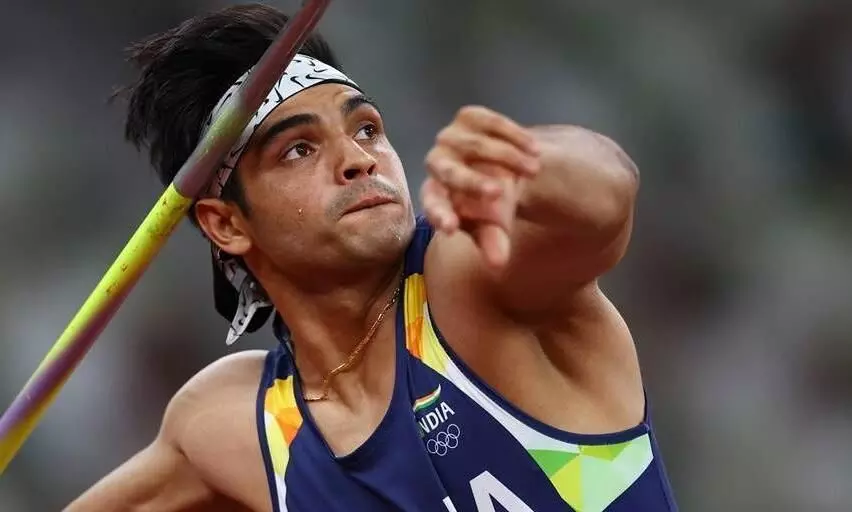
Neeraj Chopra's coach provides key update on athlete's fitness ahead of Paris Olympics
text_fieldsNeeraj Chopra, the 26-year-old javelin thrower who made history with his gold medal win at the Tokyo Olympics, is once again India’s top contender for a podium finish at the upcoming Paris Olympics.
Despite a season marked by fitness concerns, Chopra's German coach, Klaus Bartonietz, has assured that the athlete's adductor niggle is no longer an issue and that preparations are progressing well.
In an exclusive interview from Antalya, Turkey, where Chopra is currently training, Bartonietz stated, "Everything is according to plan. At the moment, no issue with that (adductor niggle), it's fine, it looks good, hoping to remain like that till the Olympics." The coach emphasized that Chopra is now in the high-intensity phase of his training.
Chopra's season has seen its share of setbacks. He withdrew from the Ostrava Golden Spike event on May 28 as a precaution after feeling discomfort in his adductor. However, he bounced back by winning gold at the Paavo Nurmi Games in Finland on June 18 with a throw of 85.97 meters. He later opted out of the Paris Diamond League on July 7, maintaining that the event was never part of his competition calendar for the year.
With the Olympic qualification round scheduled for August 6, Bartonietz outlined Chopra's rigorous training routine, which includes sessions of sprinting, jumping, throwing, and weightlifting, each lasting two to two-and-a-half hours. The approach mirrors the one used in preparation for the Tokyo Olympics.
Chopra has been focusing more on training than competing this season, particularly working on strengthening his blocking leg to reduce pressure on his groin. Bartonietz highlighted the importance of a strong runway and blocking technique in javelin throw, noting, "It's very hard to throw far with a poor runway. More the energy you bring with that, the better it is."
Despite competing in fewer events before the Paris Games compared to the Tokyo Olympics, Bartonietz does not see this as a disadvantage. He explained that too many competitions can disrupt preparation and increase risk, stating, "Competitions sometimes disrupt preparation and you start all over again. Competing in high-class events can become risky also."
When asked about Chopra's decision to skip the Paris Diamond League, Bartonietz mentioned that minor issues and the venue not being the Olympic stadium contributed to their decision, adding, "There were some minor issues, not worth risking by going there."
As for predicting medal chances, Bartonietz remained cautious. He acknowledged that the competition is wide open, with none of the top javelin throwers having performed exceptionally well this season. He noted, "The Olympics is a high-stakes and high-pressure situation and anything can happen. Guessing a medal on the basis of statistics is difficult."
Highlighting the unpredictability of the event, Bartonietz said, "An 88m throw may not be enough in the Olympics for a medal but it can happen with an 85m also, you never know. It is like a game of poker and on some days you can throw far if you have momentum." He identified the Czech Republic's Jakub Vadlejch, Germany's Julian Weber, Grenada's Anderson Peters, and Finland's Oliver Helander as key contenders for medals.
Regarding the purple-colored Mondo tracks at the Olympic Stadium in Paris, which are expected to provide faster timings for races, Bartonietz said, "It's basically for sprinters (to have better timings). It may be good for Neeraj also, of course, but it's for all javelin throwers, it can be fast. But it is a matter of full use of the speed."











